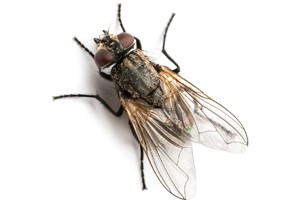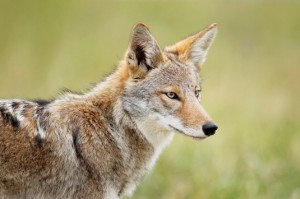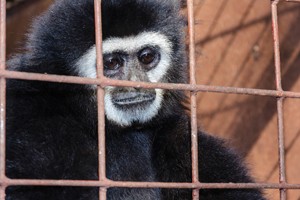What?
House fly, Musca domestica
Where?
Sprawling urban areas
Why?
Few fly species interact with humans. Species that do, however, can become destructive pests. House flies spread diseases to humans and domesticated animals and contaminate food and packaging. Increasing international travel eliminates many of the barriers that stop the spread of insects globally. Flying insect mobility is a primary reason flies have significant pest status. House flies visit many diverse and contaminated habitats within the course of their relatively short life span. According to NASA’s Goddard Institute for Space Studies (GISS), the Earth’s average global temperature has increased by about 1.4°F since 1880. Warmer conditions could promote the transmission of diseases and increase disease-vector populations. A simulated climate change model predicted a potential increase of fly populations 244 percent by 2080.
What?
Coyote, Canis latrans
Where?
Arctic to tropic areas throughout North America (penetrating suburban areas)
Why?
With behavior ranging from cunning to bold, coyotes are aggressively encroaching and taking up urban residence with resonance. Living in sheltered areas and generally not constructing dens, except when raising young, coyotes seek shelter underground when pursued or during severe weather events. Research indicates urban coyotes are monogamous, unlike rural coyotes. Additionally, the survival rate for urban coyote pups vs. rural pups is five times higher. Changing weather patterns and a loss of natural habitats are forcing more rural species into urban areas. As the most recent and largest mammalian predator to enter and survive within urban areas, the coyote will be a more significant challenge for human and animal co-existence.
What?
Illegal wildlife trade
Where?
Underground black market
Why?
Wildlife ranks third behind drugs and guns as the top black market trading goods. Estimated to be a multi-billion-dollar business, unlawful animal trade involves live animals, their anatomical parts and bodily-derived products. Illegal trade is pushing more endangered species into extinction and is unsustainable and harmful to wildlife populations.Endangered species are the target of wildlife crime because of rarity and economic value. Illegal trade negatively affects natural resources. Through release and escape, some illegally traded exotic species quickly become significant invasive species and then significantly pestiferous.
Dr. Stuart Mitchell, D.O., Ph.D., M.P.H., B.C.E., a board-certified physician and entomologist, is principal technical specialist for PestWest Environmental, as well as PMP’s Technical Editor. He can be reached at docmitchell@northcoastmedia.net or 515-333-8923.



Leave A Comment